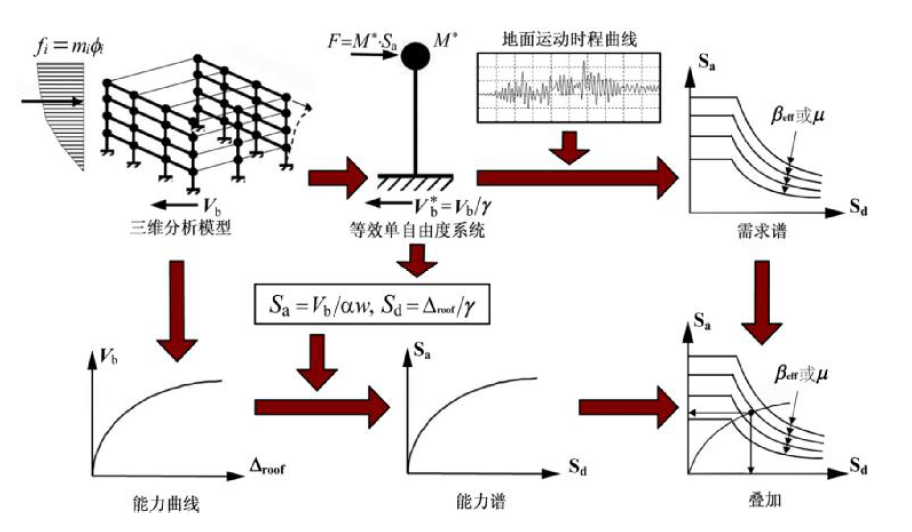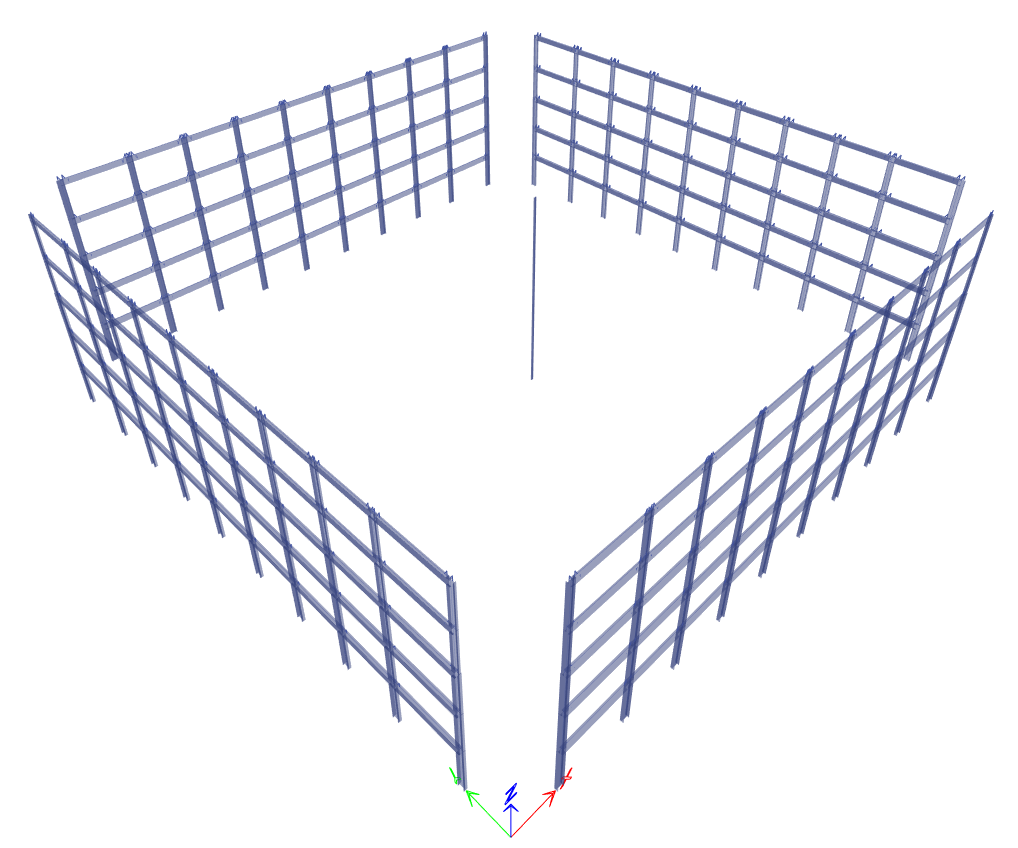旧文重发,本文是对弹塑性分析一些想法的梳理。即将奔四,对结构的热情依然未减,但写文的时间越来越少,且写且珍惜。经过研究生课题研究、接近十多年工程实践经验,一些想法也发生了变化。写了几点思考,供也有同样思考的朋友一起交流。包含2013年的旧思与2022年的最新反思。

1. 动力弹塑性时程分析 vs 静力Pushover分析:哪个更准确?
一部分人认为,时程分析采用地震波,而地震波的离散性大,不同地震波可能导致结果差异显著;而Pushover分析避免了地震波离散性问题,因此更精确。另一部分人则指出:
- Pushover主要考虑第一阶振型,可能忽略高阶振型影响;
- 静力方法评估动力问题存在理论局限性。
实际分析中通常:
- 先做弹塑性动力时程分析;
- 再用Pushover分析对比验证。
结论:弹塑性分析复杂且需综合判断,能揭示结构薄弱环节并辅助设计决策的方法即为好方法。

2. 是否存在完美的弹塑性分析软件?
理想主义者的困境:
- ABAQUS:功能强大但学习成本高;
- PERFORM-3D:专注结构工程但界面不够友好。
比喻:如同选择伴侣,完美即意味着不完美。软件无情人有情——善用优势,接受不足。

3. 需要追求”精确建模”吗?
两种极端:
- 理想主义者:追求”德智体美劳”全面发展的模型;
- 现实主义者:重视整体性能而非细节精确。
核心观点:
- 计算必然存在假设,假设即非真实;
- 结构工程容许误差大于机械工程;
- 关键在于把握整体性能 + 重点构件分析。

4. 如何高效学习弹塑性分析软件?
分三阶段进阶:
- 操作掌握期:
"软件虐你千百遍,你待软件如初恋" - 原理理解期:
"革命尚未成功,同学仍需努力"- 掌握算法原理、假设条件、优缺点
- 工程实践期:
"衣带渐宽终不悔"- 需耐心细致解决实际问题

5. 弹塑性分析的必要性
适用场景:
- 超限高层或不规则结构;
- 新型抗震体系/创新设计;
- 使用非规范材料/减隔震装置;
- 需实现超预期性能目标。
决策依据:项目复杂度 × 设计创新 × 业主性能需求
结语与展望
核心观点:分析是手段,设计才是目的。
- 常规结构无需过度使用弹塑性分析;
- 滥用倾向需警惕,规范要求也应辩证看待。
未来展望:
- 分析工具将趋向隐形化:
- 秒级计算速度
- 方案初期即输出性能指标
- 与AI/机器学习深度融合:
- 智能优化设计方案
- 降低人工成本,激发结构创新
让结构的价值不再依附于建筑表皮,而是通过性能设计创造独立价值。
Repost of an old article. This piece reflects on elasto-plastic analysis. Approaching my 40s, my passion for structural engineering remains undiminished, but time for writing grows scarce. Cherish these moments. After graduate research and a decade of engineering practice, my perspectives have evolved. Below are reflections shared for those who ponder similarly. Contains thoughts from 2013 and updated reflections in 2022.

1. Dynamic Elasto-Plastic Time-History Analysis vs Static Pushover Analysis: Which is More Accurate?
Some argue that time-history analysis uses seismic waves with inherent randomness—different waves can yield significantly different results. Pushover analysis avoids this variability, making it more precise. Others counter:
- Pushover primarily considers the first-mode vibration, potentially neglecting higher-mode effects;
- Static methods face theoretical limitations in evaluating dynamic problems.
Common practice:
- Conduct elasto-plastic dynamic time-history analysis first;
- Validate with Pushover analysis for comparison.
Conclusion: Elasto-plastic analysis is complex and requires holistic judgment. Any method revealing structural weaknesses and aiding design decisions is valid.

2. Is There a Perfect Elasto-Plastic Analysis Software?
Idealist’s Dilemma:
- ABAQUS: Powerful but steep learning curve;
- PERFORM-3D: Focused on structural engineering but less user-friendly.
Analogy: Like choosing a partner, perfection implies imperfection. Software lacks humanity—leverage strengths, accept limitations.

3. Is “Precision Modeling” Necessary?
Two Extremes:
- Idealist: Pursues models with “complete virtues” (comprehensive accuracy);
- Realist: Prioritizes overall performance over local precision.
Core Perspective:
- All calculations involve assumptions (i.e., approximations);
- Structural engineering tolerates larger errors than mechanical engineering;
- Focus on holistic performance + critical component analysis.

4. How to Master Elasto-Plastic Analysis Software Efficiently?
Three-phase progression:
- Operation Mastery:
"The software torments you endlessly, yet you treat it like your first love." - Principle Understanding:
"The revolution is not yet complete; comrades must continue striving."- Grasp algorithms, assumptions, pros/cons
- Engineering Practice:
"I’ll never regret even if my belt grows looser."- Requires patience and meticulousness to solve real-world problems

5. Necessity of Elasto-Plastic Analysis
Applicable Scenarios:
- Super-high-rise or irregular structures;
- Novel seismic-resistant systems/innovative designs;
- Non-standard materials/energy dissipation devices;
- Performance goals exceeding code expectations.
Decision Criteria: Project Complexity × Design Innovation × Owner’s Performance Needs
Conclusion & Outlook
Core View: Analysis is a means, design is the end goal.
- Avoid overusing elasto-plastic analysis for conventional structures;
- Be cautious of misuse—even codified requirements require critical evaluation.
Future Trends:
- Invisible analysis tools:
- Second-level computation speed
- Performance metrics output at early design stages
- Integration with AI/machine learning:
- Intelligent design optimization
- Reduce labor costs while fostering structural innovation
Let structural value transcend architectural aesthetics through performance-driven design.